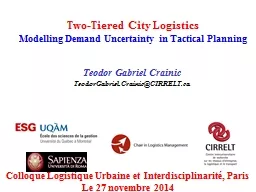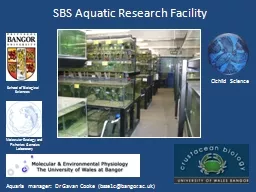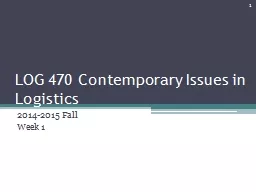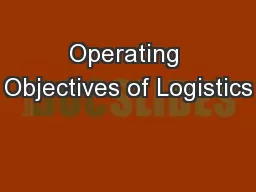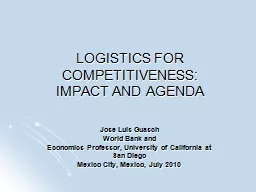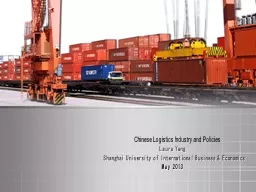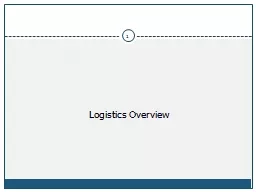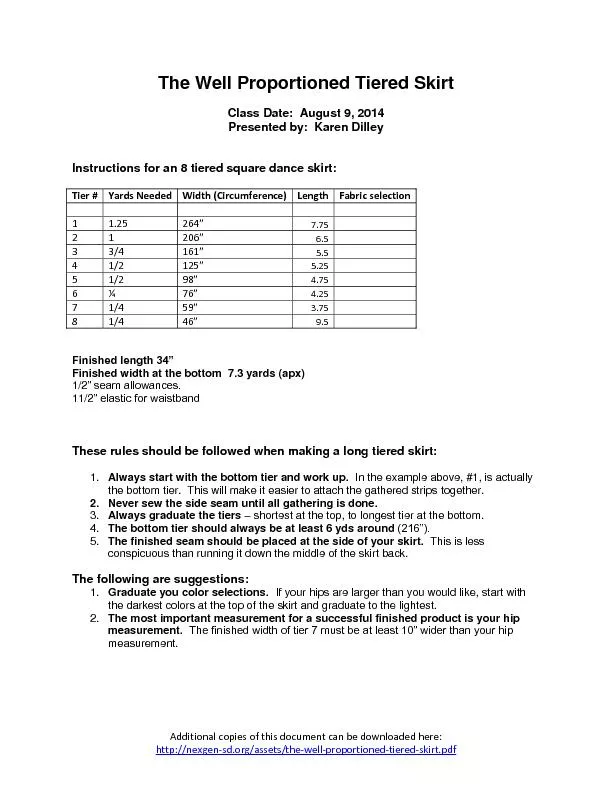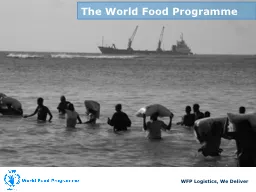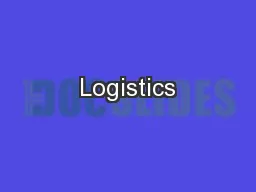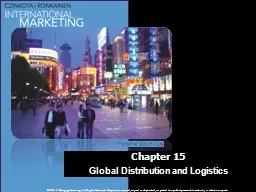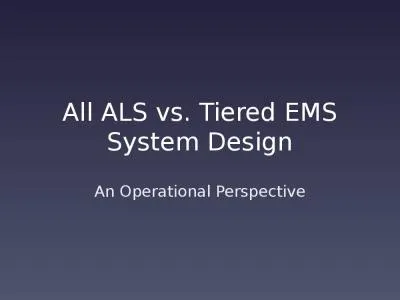PPT-Two-Tiered City Logistics
Author : sherrill-nordquist | Published Date : 2016-04-23
Modelling Demand Uncertainty in Tactical Planning Teodor Gabriel Crainic TeodorGabrielCrainicCIRRELTca Colloque Logistique Urbaine et Interdisciplinarité Paris
Presentation Embed Code
Download Presentation
Download Presentation The PPT/PDF document "Two-Tiered City Logistics" is the property of its rightful owner. Permission is granted to download and print the materials on this website for personal, non-commercial use only, and to display it on your personal computer provided you do not modify the materials and that you retain all copyright notices contained in the materials. By downloading content from our website, you accept the terms of this agreement.
Two-Tiered City Logistics: Transcript
Download Rules Of Document
"Two-Tiered City Logistics"The content belongs to its owner. You may download and print it for personal use, without modification, and keep all copyright notices. By downloading, you agree to these terms.
Related Documents

